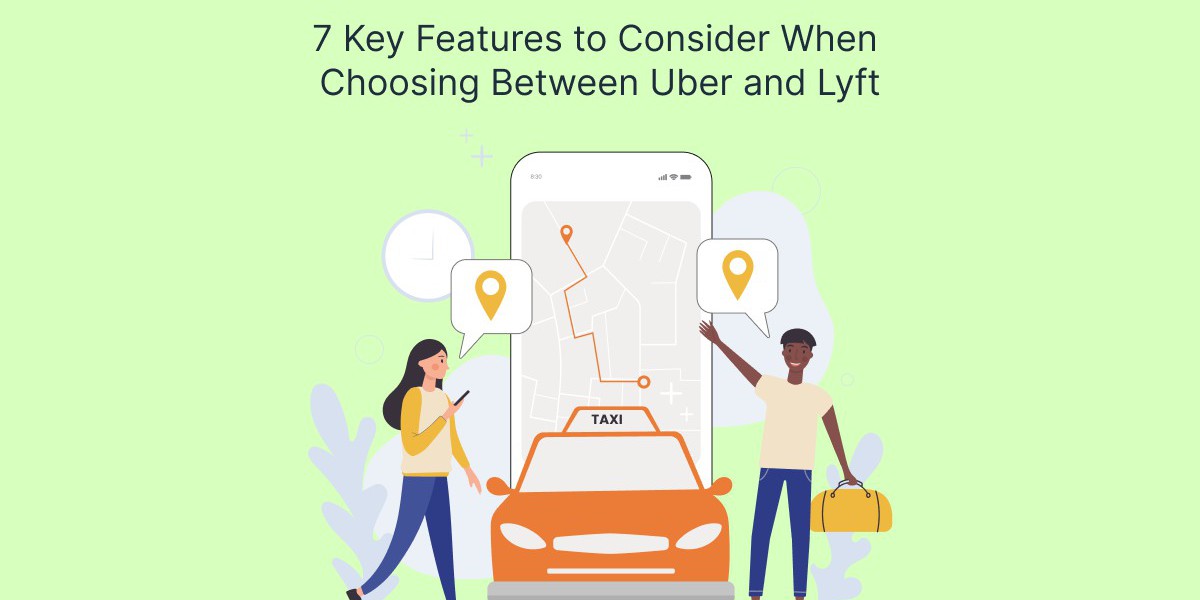Uber and Lyft are two of the biggest names in ridesharing, each offering unique features that cater to different types of riders. Whether you're a frequent commuter, a casual user, or someone who needs reliable transportation on demand, understanding the key features of each platform can help you decide which service suits you best. Discover the 7 key features to consider in our comprehensive guide to Lyft vs Uber comparison. This guide highlights seven essential features to consider when choosing between Uber and Lyft, from pricing structures to ride options, loyalty programs, and safety features.
Ride Options and Vehicle Choices
Uber's Range of Vehicle Options
Uber provides a variety of ride options tailored to different needs and budgets:
- UberX : Affordable rides for solo travelers or small groups.
- Uber Comfort : A step up from UberX, featuring newer cars with more legroom.
- Uber Pool : Shared rides where passengers heading in the same direction split the cost.
- Uber Black and Uber Lux : Premium services offering high-end vehicles and professional drivers.
- UberXL : SUVs and larger vehicles for bigger groups or those with extra luggage.
Uber's diverse ride options make it easy to find a vehicle that fits your budget and requirements, whether you want a basic ride or a luxury experience.
Lyft's Vehicle Options
Lyft offers a similar range of choices with slight differences:
- Lyft Standard : A cost-effective option comparable to UberX.
- Lyft Shared : Allows passengers to split the cost by sharing a ride with others.
- Lyft Lux and Lux Black : Premium ride options with luxury vehicles and top-rated drivers.
- Lux Black XL : For large groups needing a high-end vehicle with extra space.
While Lyft's selection is more streamlined, it still provides enough options to suit various travel needs, from everyday commutes to upscale travel.
Pricing and Surge Rates
Uber's Pricing Structure and Surge Pricing
Uber calculates fares based on base rate, distance, and time, which varies by city and service type. During peak hours, events, or high-demand situations, Uber uses Surge Pricing, increasing rates to encourage more drivers to get on the road. Surge pricing can result in significantly higher fares, sometimes two to three times the usual rate.
Lyft's Pricing and Prime Time Rates
Lyft's pricing model is similar, with a base fare plus per-minute and per-mile charges. However, Lyft's version of surge pricing, known as Prime Time, tends to be slightly more moderate than Uber's. During high-demand periods, Lyft increases rates, but often not to the extent of Uber's surges.
Key Takeaway : If you're traveling during peak hours or high-demand events, Lyft might be a more cost-effective choice, as its Prime Time rates are generally lower than Uber's surge pricing.
Loyalty and Rewards Programs
Uber Rewards Program
Uber's Rewards Program is free and allows riders to earn points with every trip. As riders accumulate points, they can unlock different membership tiers (Blue, Gold, Platinum, and Diamond) that offer perks such as flexible cancellations, priority support, and price protection on certain routes.
Lyft Pink Subscription
Lyft's loyalty program, Lyft Pink, is a subscription-based service costing around $9.99 per month. Members receive benefits like 15% off rides, priority airport pickups, and three free bike or scooter rentals per month. This program offers consistent discounts for frequent users, making it an attractive option for those who regularly use Lyft.
Key Takeaway : For frequent riders, Uber's rewards program offers a variety of perks without any cost. However, if you're looking for consistent ride discounts, Lyft Pink might be more beneficial.
App Experience and User Interface
Uber's Feature-Rich App
Uber's app includes several features designed to enhance user experience:
- In-App Tipping : Allows riders to tip drivers after the trip.
- ETA Sharing : Riders can share their estimated time of arrival with friends or family.
- Ride History : Access previous trip details and receipts.
- Safety Tools : Emergency button, driver background checks, and live trip tracking.
Lyft's Simple and Customizable Interface
Lyft's app offers a more streamlined, user-friendly interface with a few unique customization options:
- Split Payment : This enables splitting the fare with other riders.
- Quiet Ride Option : Allows riders to select a quiet ride for less conversation.
- Rider Preferences : Set preferences for temperature, music, and other ride details.
- Safety Features : Includes an emergency assistance button and trip sharing.
Key Takeaway : Uber's app is feature-packed and designed for a seamless experience, but Lyft's customization options make it more appealing to users who want a personalized ride experience.
Safety Features and Policies
Uber's Safety Measures
Uber incorporates several safety features into its app to enhance rider security:
- Emergency Assistance Button : Directly connects riders to emergency services.
- Real-Time Trip Sharing : Allows friends or family to follow the ride's progress.
- Driver Background Checks : Uber conducts background checks and continuous monitoring of drivers.
- 24/7 Support : Provides around-the-clock customer support for rider concerns.
Lyft's Safety Policies
Lyft's app also prioritizes rider and driver safety with similar features:
- In-App Emergency Help : Allows riders to contact emergency services directly from the app.
- Critical Response Line : A support line for urgent safety-related issues.
- Driver Screenings : Background checks and periodic monitoring of driver records.
- Ride Sharing : Riders can share trip details with friends or family for added security.
Key Takeaway : Both Uber and Lyft provide comprehensive safety features, but Uber's more extensive customer support system and real-time monitoring may offer a slight edge.
Promotions and Discounts
Uber's Promotions
Uber frequently offers promo codes, especially for new riders. Promotions and discounts are occasionally available for existing riders, though they are less frequent than for first-time users.
Lyft's Promotional Offers
Lyft also offers discounts for new users, along with city-specific promotions and seasonal deals. Lyft tends to have more regular discounts and promotional offers than Uber, especially during high-demand times or holidays.
Key Takeaway : If you're looking for frequent discounts, Lyft's promotional offers and seasonal discounts may be more advantageous.
Customer Support and Service Quality
Uber's Customer Support
Uber's customer support is accessible through the app for issues like lost items, trip complaints, and making adjustments. Support is primarily automated, though Uber offers live help for more serious issues. The app's customer service response time is generally reliable but can vary based on location and issue complexity.
Lyft's Customer Service Approach
Lyft is known for its community-oriented service and offers support through the app as well. Lyft's Critical Response Line allows riders to address safety concerns immediately, and the customer support team is often praised for its helpfulness and quick response.
Key Takeaway : Both Uber and Lyft provide accessible in-app support, but Lyft's reputation for attentive service may make it a better option if you value a supportive customer experience.
Conclusion
Choosing between Uber and Lyft depends on your unique needs and preferences. Uber's broad selection of ride options, loyalty rewards, and extensive safety features make it ideal for frequent travelers and those seeking a luxury experience. Discover the 7 key features to help you choose between Uber and Lyft. Make an informed decision with insights from a leading on-demand app development company . On the other hand, Lyft's focus on community, consistent promotional offers, and simple app interface appeal to users looking for a budget-friendly, personalized experience.



